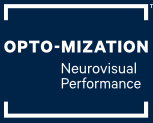Overlooked: Are Unseen Visual Deficits Causing Your Child Trouble at School?
Meet Austin. At 6 years old and half way through grade one, he was unable to read, struggling to form his letters properly, and miserable at school. He would hide under his desk at school, and was unable to attend to any work for very long. He was not a very happy child. Educators were beginning to suggest that perhaps he had attention deficit disorder.
Austin’s sight had been checked, confirming that he could see ’20/20’, which amounts to being able to discriminate a certain sized letter or figure from across the room. However, adequate vision for learning requires a lot more than being able to see ’20/20’, and upon further testing Austin displayed very poor tracking abilities, poor eye teaming abilities, poor focusing abilities, and visual processing troubles.
The other visual skills listed above are what would be considered the ‘software’ of the visual system. The ‘hardware’ would be considered the eyes, muscles, nerves, and other physical parts. In the visual system, the software is responsible for allowing the eyes to move accurately and together with efficiency, focusing is accurate and efficient, visual information processing and visual memory work well together. The visual software is also responsible for visual-motor components, including hand-eye coordination. Children (or adults) can have problems in either one area or multiple areas.
Trouble in the area of accurate movement can mean that when reading, the eyes do not actually move to where they should. This can cause it to seem like a child may ‘see a word backwards’ as the eyes actually hit the last letter than jump back to the beginning, skipping lines, losing their place, reduced comprehension, or many other symptoms.
Letter reversals are another common issue that is seen. While this is quite normal up until age 7, it shows a lack of directionality. Rather than seeing it backwards, the child is unable to differentiate between the two directions, or to compare it against a stored visual image of what the letter should look like.
Spelling is a fantastic example of visual processing or visual imagery. If you were to receive and email with a word that is spelled incorrectly, what would you say to yourself? ‘That sounds wrong’? Unlikely. ‘That looks wrong’ is the response that comes to mind, as spelling has everything to do with visual memory.
Attention issues at school is another issue that is commonly seen. ‘He can read just fine, but he doesn’t like to do it’, or ‘she just won’t try’ are related to this. Staying on task is very difficult if the visual system operates inefficiently. Similar to how an less efficient gas engine will burn through the available fuel faster than a more efficient one, the energy demand for the child to stay on task will be much greater than it should be.
The good news is that the software components of the visual system are just like your computer in the sense that they can be upgraded and improved with proper treatment.
After being treated for his visual deficits, Austin is now in grade two, has aced his first 3 spelling tests, loves reading, is excited for school every day, has hugely improved hand eye coordination, and most importantly is a very happy child who is working to his potential.
If your child, or the child of someone you know is having trouble at school, it is critical to have the entire visual system evaluated, including: tracking, focusing abilities, eye teaming abilities and visual processing. It is important to rule out the underlying problems that may be causing the behavior.
